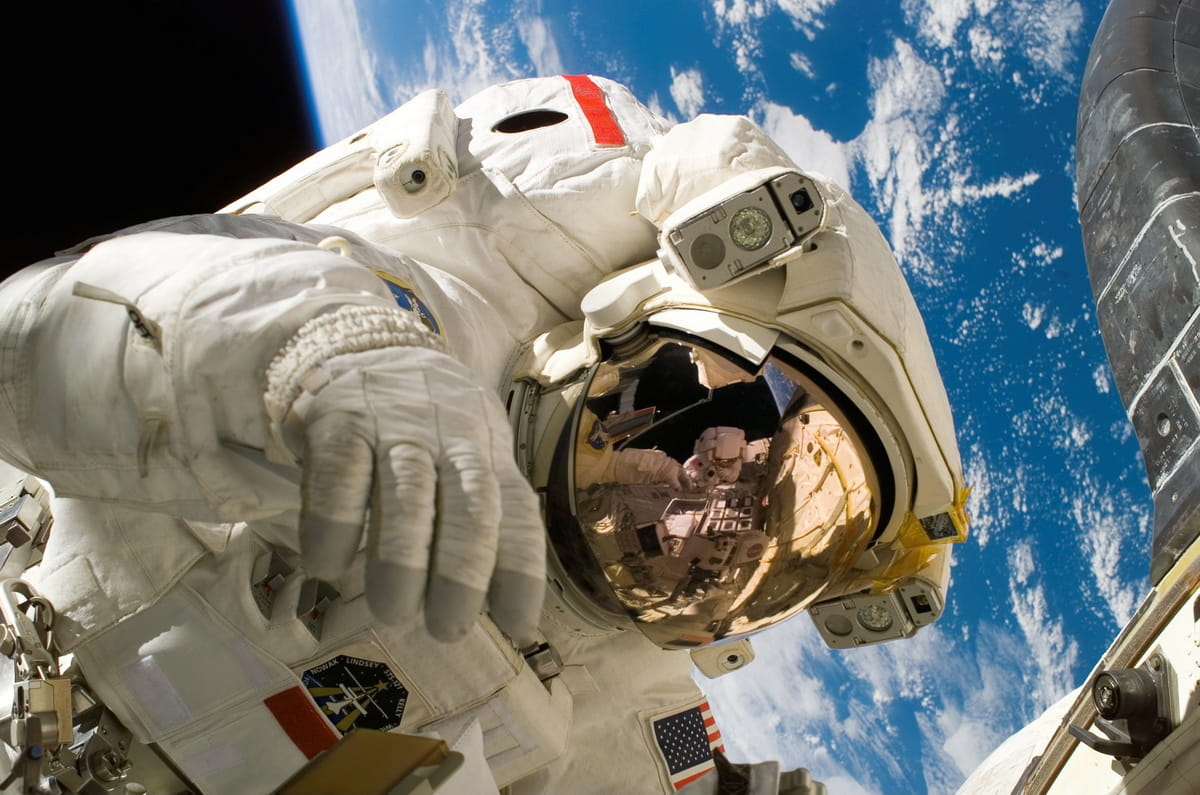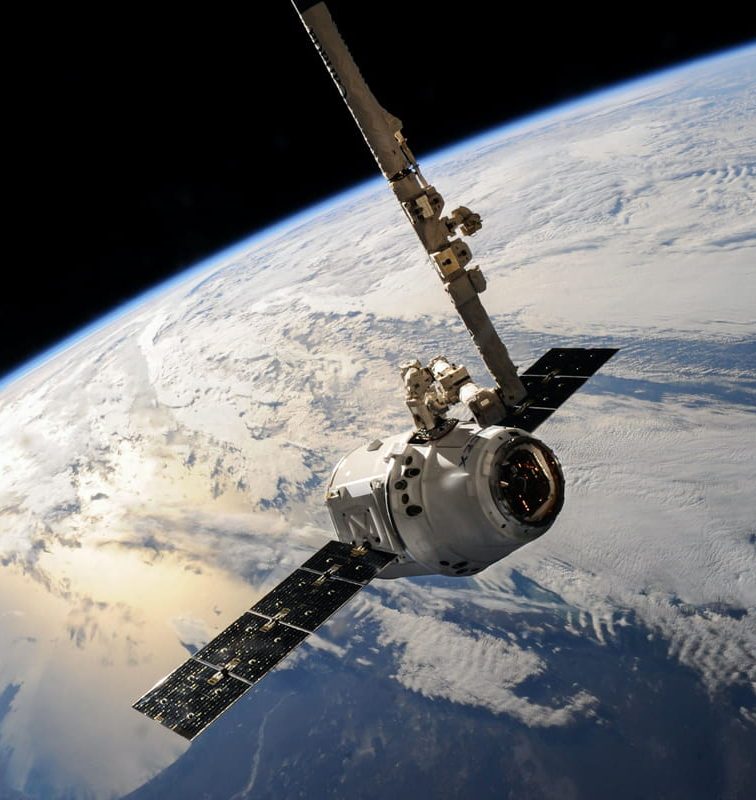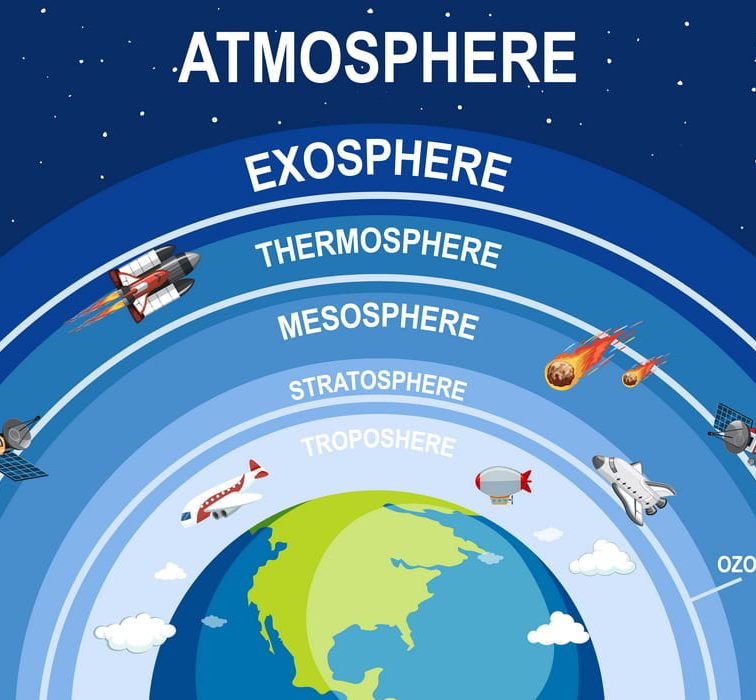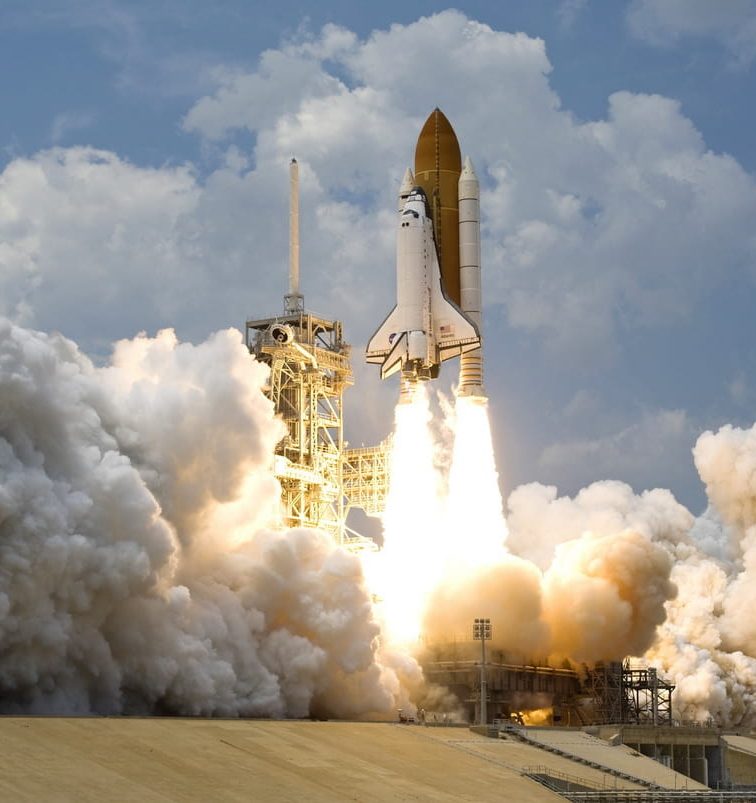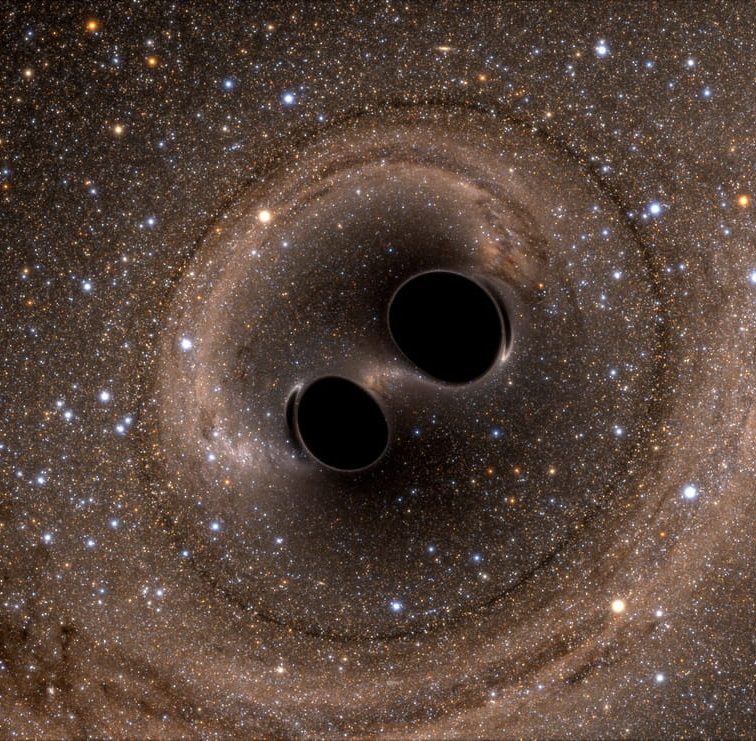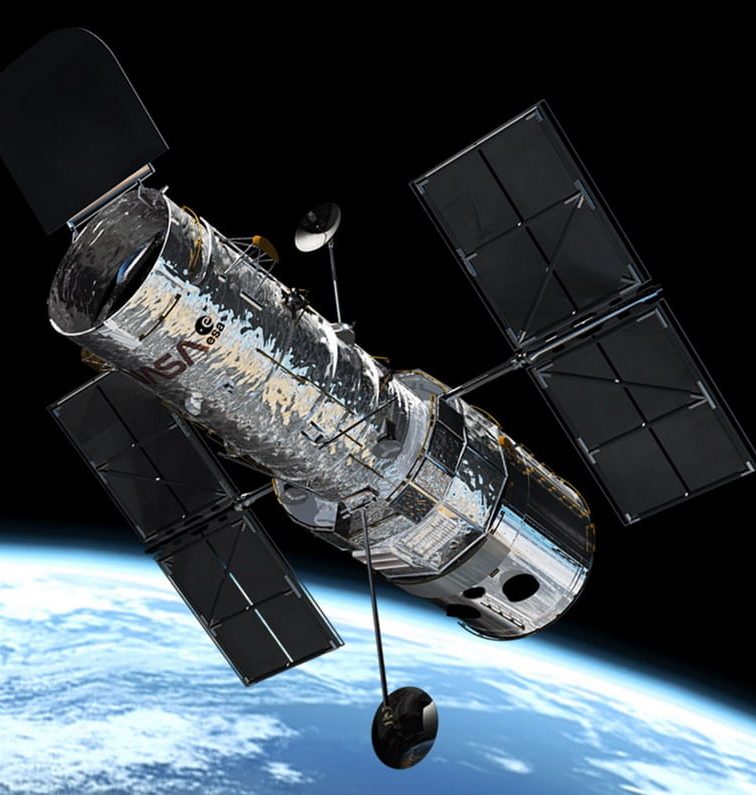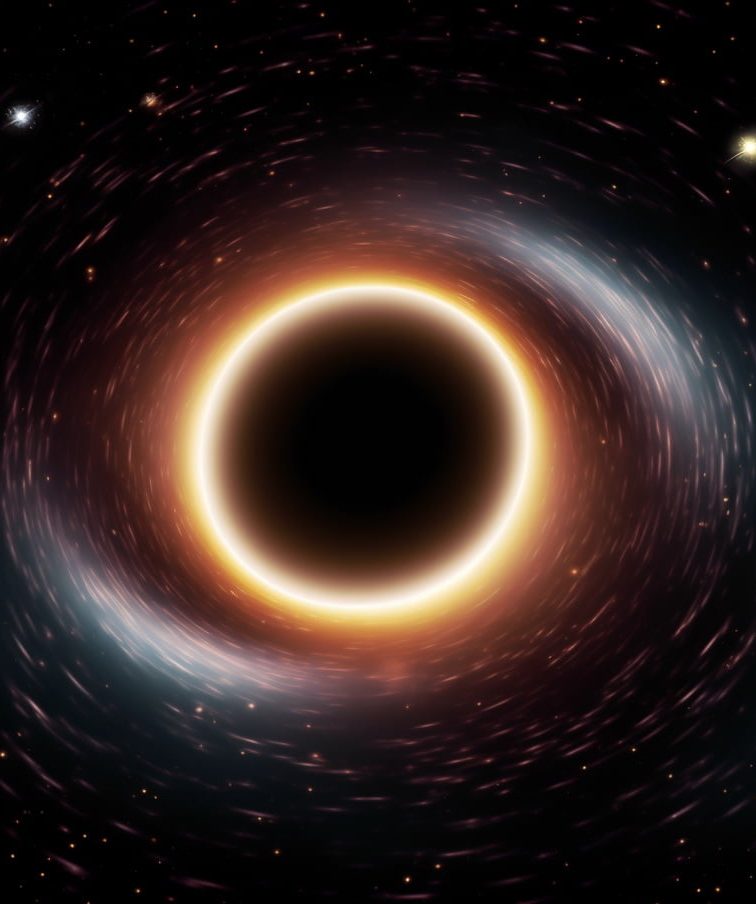Think you know everything about space and those who explore it? Think again! While space missions are meticulously documented, some fun tidbits often escape the public eye. For instance, between 1961 and 1972, 12 astronauts walked the moon, but only one did a moonwalk dance!
Or consider this: though astronauts are among the best-trained humans on Earth, one of their top challenges is… handwashing! Tighten your space belts as we delve into these and other intriguing fun facts about astronauts.
1. Star Sailors: The Origin of the Word “Astronaut”
Historically rooted, the term “astronaut” emerges from ancient Greek. “Astron” signifies “star” while “nautes” stands for “sailor.” Hence, astronauts are aptly dubbed star sailors.
When the term was formally adopted in the 20th century, it reflected the essence of space exploration: navigating the universe’s vastness. For perspective, “cosmonaut”, often used in Russia, has a similar connotation, stemming from “kosmos” (universe) and “nautes”.
2. Armstrong’s First Steps: Neil’s Not-So-Famous First Words
July 20, 1969, marks a monumental day in human history. While Neil Armstrong’s words as he stepped onto the moon’s surface are iconic, his prior transmission, post the lunar module’s landing, remains overshadowed. He relayed, “Houston, Tranquility Base here. The Eagle has landed.”
Notably, the “Eagle” was the module’s nickname, signifying its importance in the Apollo 11 mission, which had an estimated budget of $25.4 billion (around $150 billion today when adjusted for inflation).
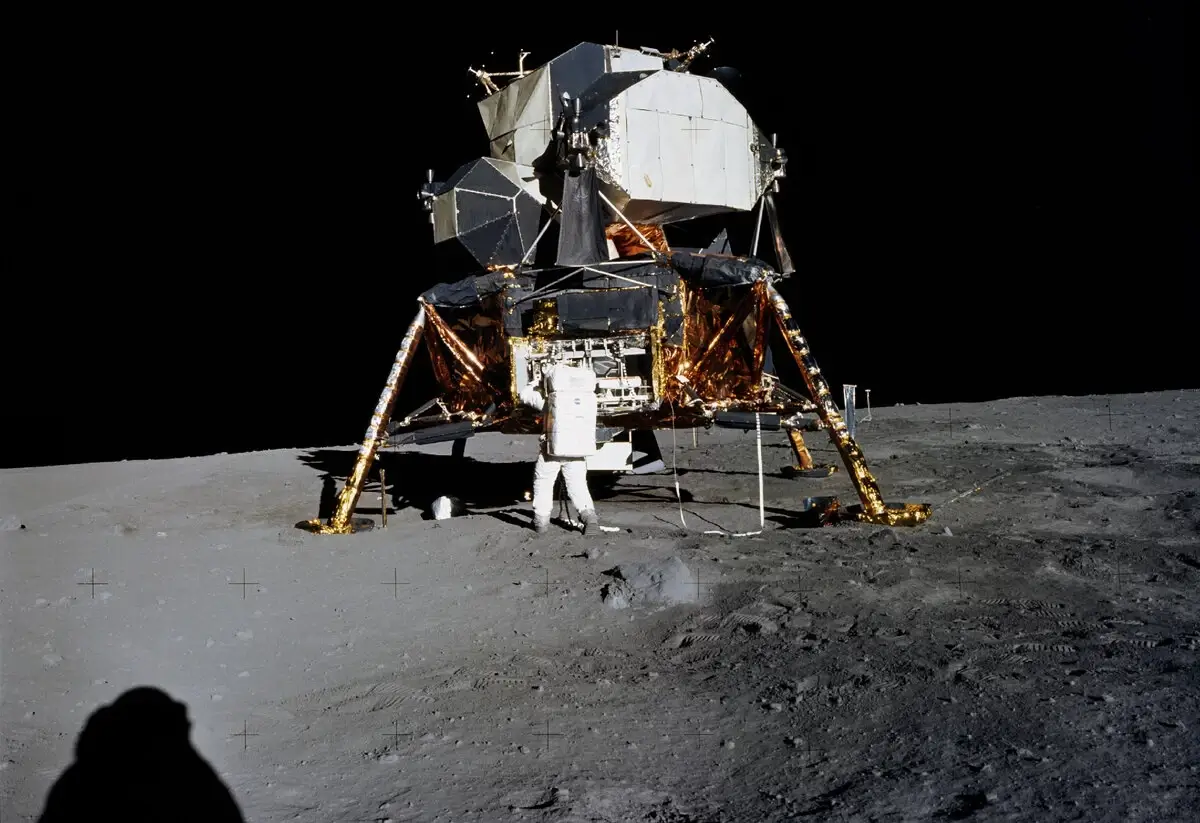
Image: Wikimedia Commons
3. The Lonely Orbit: Michael Collins, Earth’s Ultimate Photobomber
As Armstrong and Aldrin took lunar strides, Michael Collins was isolated in the command module, undertaking 30 lunar orbits alone. For 48 minutes of each 2-hour orbit, he’d be behind the moon, losing all contact with Earth, experiencing solitude on an unprecedented scale. Yet, he was never truly alone; he was accompanied by an entire planet!
Every Earth photo from Apollo 11 technically had Collins ‘photobombing’ from behind the camera. Historical records from NASA showcase Collins’ own insights into this unique experience, emphasizing both the isolation and the grandeur.
4. Space Tears: Why Astronauts Can’t Cry in Space
In space, no one can hear you cry – and for a good reason! Because of the microgravity environment, tears don’t fall as they do on Earth. Instead, they gather in little balls that cling to the eyes. In 2013, astronaut Chris Hadfield showed the world how these tears form by simulating crying aboard the International Space Station.
However, the build-up of tears can cause discomfort. Plus, with the absence of gravity, it becomes increasingly challenging to wipe them away. The space environment transforms even the most human reactions!
5. Spicy Space: The Curious Case of Dull Taste Buds in Orbit
Here’s a spicy tidbit: the absence of gravity affects astronauts’ taste buds. Researchers found that astronauts aboard space missions often prefer spicier foods. Why? Fluids move upwards to the head and face, leading to nasal congestion – similar to having a cold on Earth. This congestion dulls taste and smell, hence the craving for more flavorful dishes!
NASA acknowledges this and even has a dedicated team to ensure the food sent to space is both nutritious and appetizing, ensuring astronauts get those bursts of flavor they yearn for.
6. From Dunks to Spacewalks: How Basketball Helps in Astronaut Training
Imagine prepping for space missions with a basketball in hand. Sounds strange? Well, certain aspects of astronaut training involve basketball dynamics. Quick reactions, hand-eye coordination, and spatial awareness on the basketball court mirror the requirements of complex tasks in space.
In fact, Wendy B. Lawrence, a famous astronaut, has spoken about how her basketball experiences during her youth helped in mastering her astronaut training. It’s a slam dunk for space preparation!
7. Out of this World Salary: What’s the Paycheck Like for a NASA Astronaut?
Being an astronaut isn’t just about spacewalks and floating in zero gravity; it’s also a profession. So, what’s the paycheck for these star sailors? NASA’s civilian astronauts can earn anywhere from $66,167 to $161,141 annually, with the exact amount depending on their experience and education. Military astronauts, on the other hand, are compensated based on their active-duty pay scales.
And while this salary might seem standard for such an extraordinary job, remember the unique perks they enjoy: unparalleled views, the chance to make history, and stories that will captivate audiences for a lifetime!
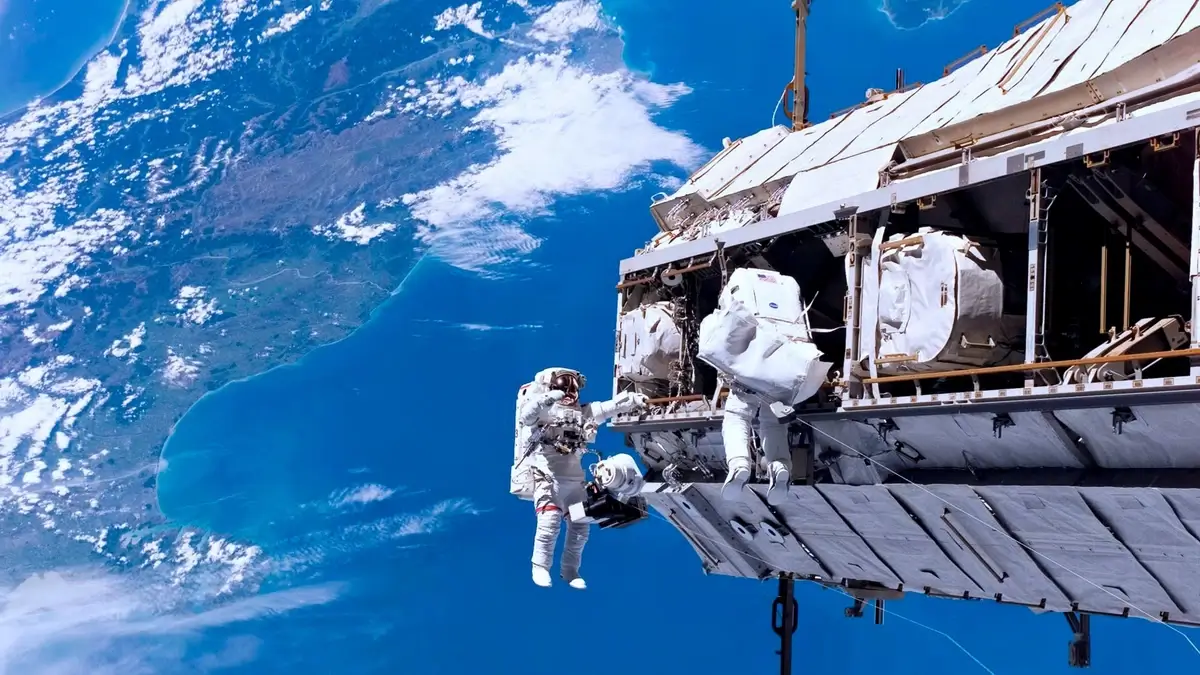
Image: nationalgeographic.co.uk
8. Venus Envy: Why No Astronaut Has Visited Venus (Yet!)
Venus, Earth’s “sister planet”, has remained unvisited by humans, and there’s good reason. Its surface is scorching hot, enough to melt lead, with temperatures soaring to about 900°F (475°C). And its atmosphere? A dense cloud of sulfuric acid! This makes landing on Venus a tremendously challenging feat.
To date, only a few Soviet spacecraft have made it to the surface, and they didn’t last long due to the planet’s extreme conditions. While Venus remains a mystery, scientists and astronauts hope that with advancing technology, its secrets will one day be unveiled.
9. Guion Bluford’s Stellar Achievement: The First African American in Space
Pioneers pave the way for generations to come, and Guion Bluford is a stellar example. In 1983, aboard the STS-8 mission of the Space Shuttle Challenger, he made history by becoming the first African American to soar into space. This marked not just a personal achievement for Bluford, but a monumental moment in space exploration history.
Bluford’s accomplishment stands as an inspiration for many, showing that the sky (or space!) is not the limit, and breaking barriers is possible with determination and passion.
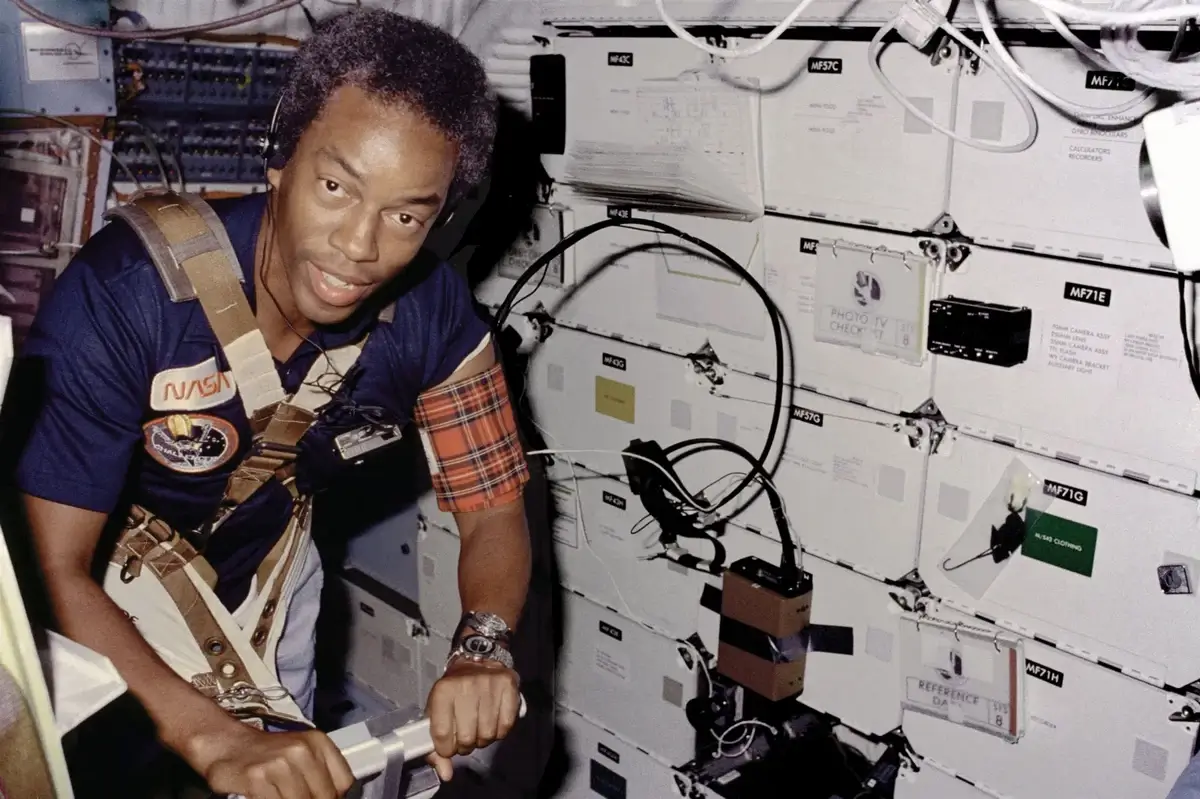
Image: Britannica
10. A Pen for the Stars: The Special Pen that Writes in Zero Gravity
In space, everyday tasks can become herculean challenges. Take writing, for instance. Normal ink pens rely on gravity to flow, which is obviously lacking in space. Enter the “Space Pen”, designed in 1965 by Paul C. Fisher. This pen uses pressurized ink cartridges that work in weightlessness, underwater, over grease, and even in extreme temperatures!
Initially not commissioned by NASA, the pen became a staple when astronauts realized its reliability. A small yet fascinating fact that shows how space demands innovation at every turn.
11. Space Sleep: Catching Z’s While Floating
Ever wondered how astronauts sleep amidst the vastness of space? Well, they don’t just float around – they zip themselves into sleeping bags attached to walls, ceilings, or whatever space (no pun intended) is available. Without the Earth’s gravity, there’s no up or down!
To ensure a sound slumber and prevent themselves from drifting away, astronauts often use Velcro straps. And while the sight of sleeping vertically might seem odd to us earthlings, for astronauts, it’s just another night – or day – in the office!
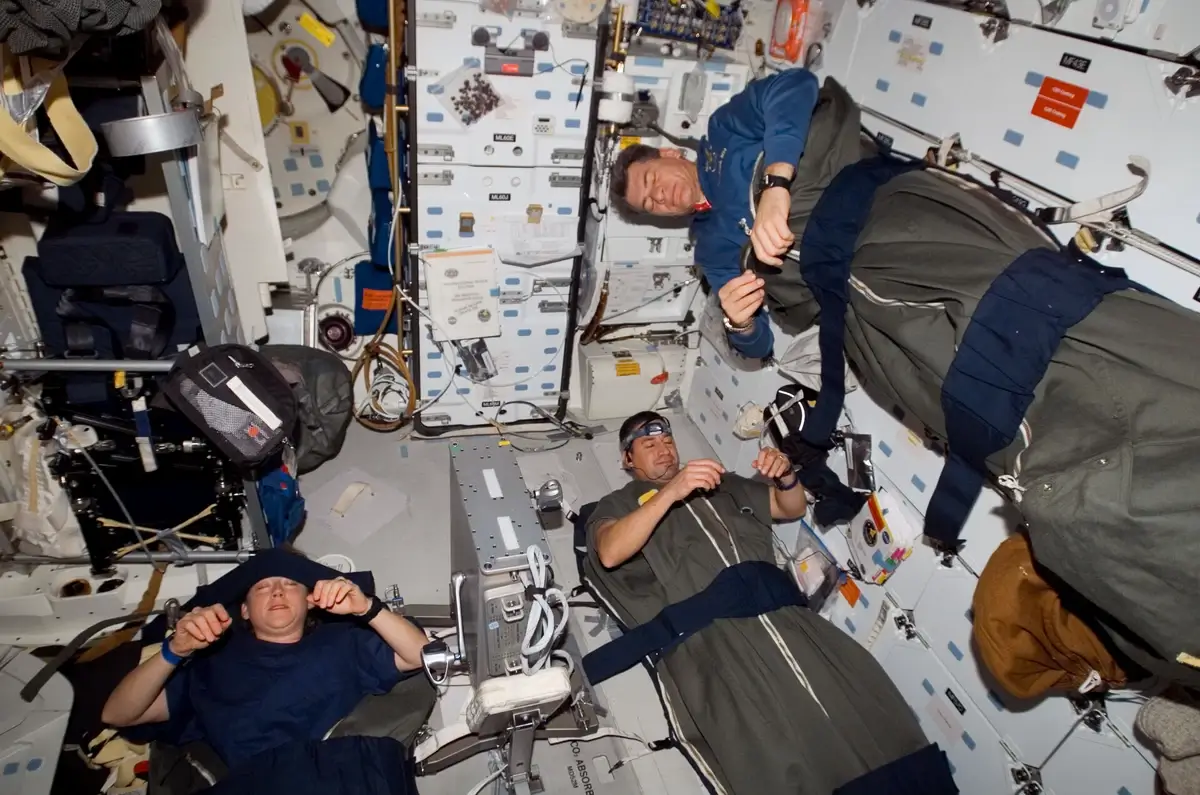
Image: esa.int
12. Andy Thomas and Down Under Space: Australia’s Contribution to the Stars
Andy Thomas isn’t just another name in the annals of space history; he’s Australia’s first NASA astronaut. Having logged over 177 days in space, Thomas is Australia’s most traveled spacefarer. His missions included a pivotal 141 days aboard the Russian Mir space station, providing key research and fostering international cooperation.
His work isn’t just about the journey to the stars; it’s a testament to Australia’s contributions to critical space missions and international partnerships.
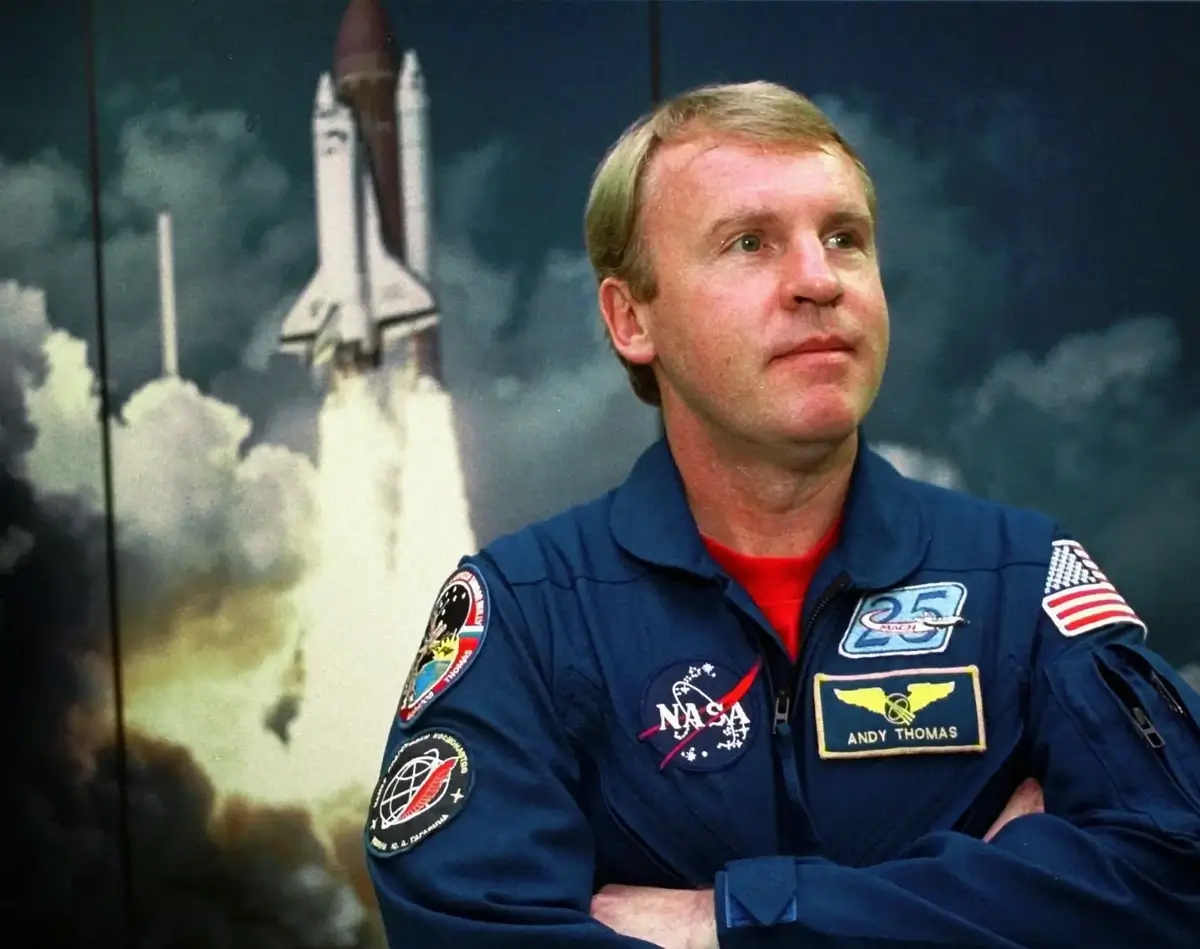
Image: thesun.co.uk
13. Fashion in Space: The Evolution of the Astronaut Suit
The very first space suits were modeled after high-altitude pressure suits worn by pilots in the 1930s. Jump to the Apollo moon missions, and suits had to withstand temperatures ranging from -156°C to 121°C! Today, the Extravehicular Mobility Unit (EMU), the modern suit used by NASA astronauts for spacewalks, weighs around 127 kg on Earth and takes 45 minutes just to put on.
The design and functionality of these suits reveal decades of scientific research and technological advancements.
14. International Collaboration: The Miracles of the International Space Station
Launched in 1998, the International Space Station (ISS) cost more than $150 billion, making it one of the most expensive structures ever built. Spanning the area of a football field, it orbits Earth at an average altitude of 420 km. The station represents the collaborative effort of 15 countries and has been home to astronauts from over 19 different countries.
This international partnership is more than a scientific endeavor; it’s a statement about the power of global unity.
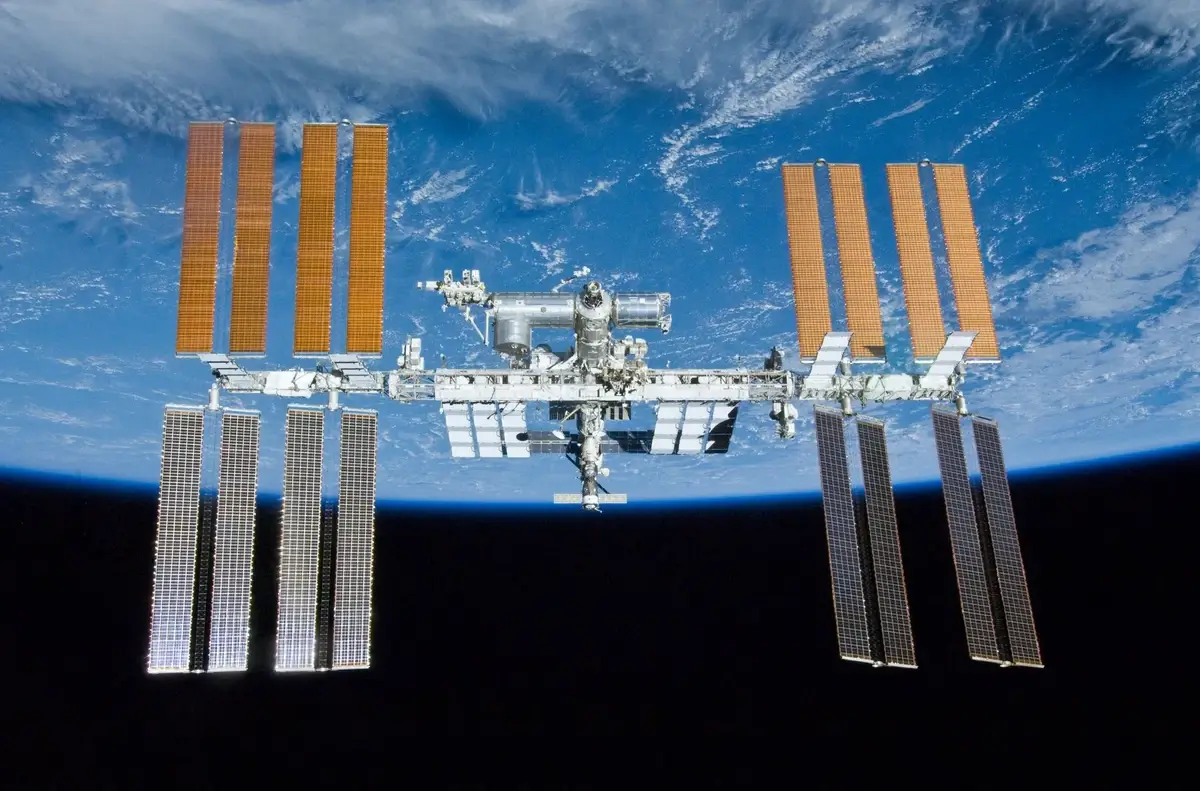
Image: seattletimes.com
15. Wendy Barrien Lawrence: Dive to Fly, From Sea to Space
Wendy B. Lawrence, a graduate of the U.S. Naval Academy in 1981, boasts a naval career of over 1,500 hours of flight in six different types of helicopters. Her skills seamlessly transitioned to space when she joined NASA in 1991. Lawrence logged more than 1,225 hours in space, participating in missions like STS-67 and STS-86, and playing pivotal roles like handling robotics aboard the International Space Station.
From diving deep in the oceans to floating in space, Lawrence’s career is a tapestry of exploration extremes.

Image: Wikimedia Commons
16. Spaced Out Bodies: The Surprising Ways Space Changes the Human Body
The microgravity environment of space has wild effects on the human physique. For starters, astronauts can grow up to 2 inches taller in space! However, it’s not all growth spurts and cosmic fun. Spaceflight osteopenia is a condition where astronauts lose bone density at a rate of 1% per month. Plus, without gravity, bodily fluids shift upwards, causing “moon face.”
Space is no spa; it’s a challenging environment demanding resilience and adaptation.
17. Record Breakers: Longest Time Spent in Space by Humans
Holding the record for the longest single spaceflight, Russian cosmonaut Valeri Polyakov orbited Earth for a whopping 437 days and 18 hours aboard the Mir space station from 1994 to 1995. The cumulative time-in-space record is held by another Russian, Gennady Padalka, at 878 days across five missions.
These extended stints help scientists understand the long-term effects of space on the human body, crucial for planning future deep-space missions.
18. Space Tunes: First Music Album Recorded in Space
Chris Hadfield, besides being a remarkable astronaut, added “space musician” to his resume. In 2013, he recorded the first-ever music album in space, titled “Space Sessions: Songs from a Tin Can.” Featuring tracks like “Space Oddity” (a David Bowie cover), this album was entirely conceived aboard the International Space Station.
Music, it seems, knows no bounds. Not even the final frontier.
19. Cosmic Caffeine: The Intricacies of Drinking Coffee in Space
In zero gravity, sipping your morning brew becomes a space-age challenge. Traditional cups won’t work, so NASA developed a special “zero-g coffee cup” that utilizes surface tension to keep the coffee clinging to the cup’s wall, allowing astronauts to drink somewhat normally.
Before this, astronauts had to sip their caffeine fix from a bag. Talk about an interstellar espresso experience!
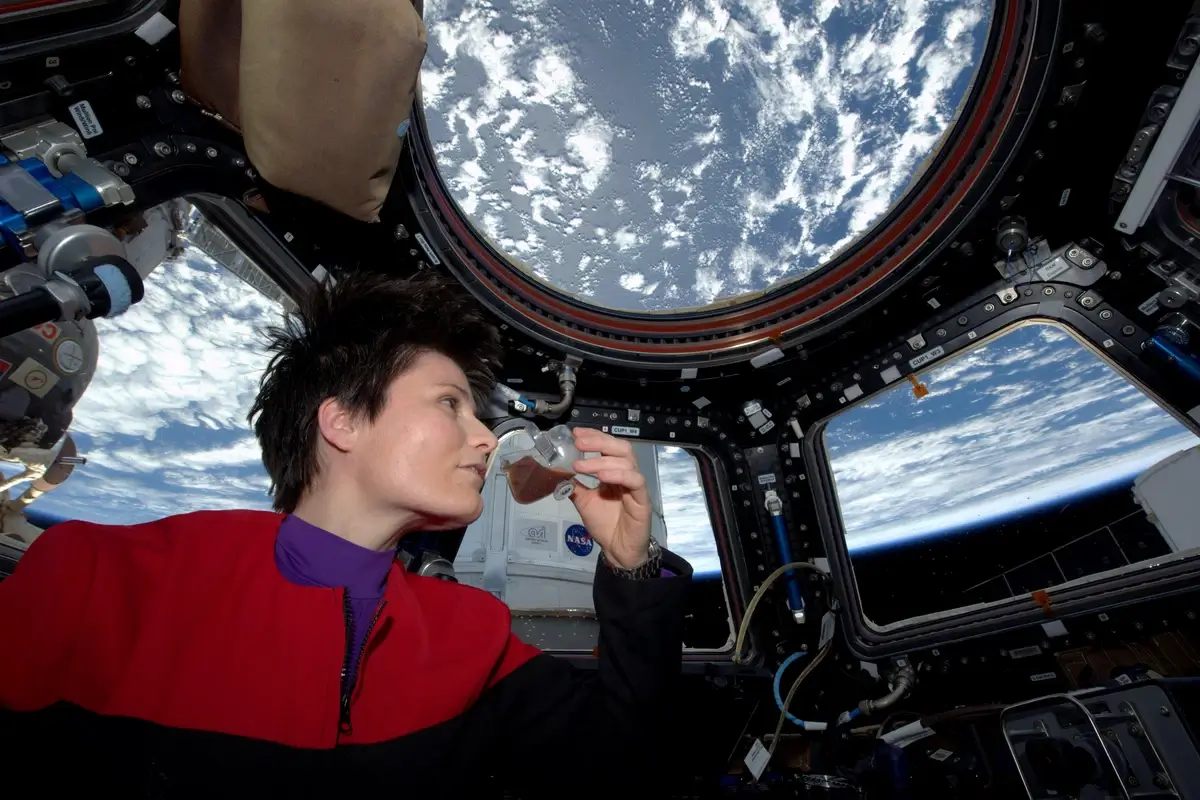
Image: pxhere.com
20. Planetary Exercise: How Astronauts Stay Fit While Orbiting Earth
Floating in space might sound chill, but staying fit is a must! Astronauts spend 2 hours a day exercising, using equipment like the Combined Operational Load-Bearing External Resistance Treadmill (COLBERT). This regimen combats muscle atrophy and bone density loss.
Given the confinement and zero-g, the exercise is also pivotal for mental health. It’s not just about fitness; it’s about survival and mission success.
FAQ
What are 3 things astronauts do?
- Spacewalks (Extra-Vehicular Activities): Astronauts step out of their spacecraft to conduct experiments, test new equipment, or carry out repairs on satellites or the space station.
- Conduct Scientific Experiments: They perform experiments that require the unique conditions of microgravity. This can range from studying how plants grow in space to observing the behavior of fluids or fire.
- Daily Maintenance: Just like maintaining a house on Earth, the International Space Station (ISS) requires cleaning, fixing equipment, and updating software.
What do astronauts miss most?
While in space, many astronauts report missing simple Earthly pleasures. Fresh food (like fruits and salads), the sensation of rain, the feel of wind, and the sounds of nature top the list. More than anything, they often miss their families and the everyday, mundane interactions with loved ones.
How do astronauts sleep?
In the weightlessness of space, there’s no up or down. Astronauts sleep in a sleeping bag that can be attached to a wall or any surface. They also make use of sleep masks and earplugs to block out potential disturbances. Interestingly, there aren’t any beds in the traditional sense aboard the ISS.
Do astronauts get money?
Yes, astronauts are compensated for their work. NASA civilian astronauts are paid based on the federal government’s General Schedule (GS) pay scale. This scale ranges from GS-11 to GS-15, with salaries between approximately $66,167 to $161,141 annually, dependent on their experience and education.
Do astronauts age less?
In theory, due to the effects of time dilation in Einstein’s theory of relativity, astronauts age slightly slower in space than on Earth, especially if they are traveling close to the speed of light. However, given the current speeds of our spacecraft, the effect is minimal. An astronaut on the ISS for six months would age less than a second less than those on Earth.
Who is the least known astronaut?
While it’s subjective to pinpoint the “least known,” there are many astronauts who didn’t gain the same level of fame as Neil Armstrong or Buzz Aldrin but made significant contributions to space exploration. One could argue that astronauts who flew only on the Shuttle missions, especially later missions, might not be as widely recognized as the early pioneers of space.
What time do astronauts wake up?
Astronauts aboard the ISS generally follow Coordinated Universal Time (UTC). Their schedule typically includes 8 hours of sleep, starting from around 22:00 and waking up at 06:00 UTC.
How long is a day in space?
On the ISS, a day is approximately the same as Earth, 24 hours. However, since the ISS orbits Earth approximately every 90 minutes, astronauts experience 16 sunrises and 16 sunsets every “day.”
How do astronauts shower?
The ISS doesn’t have a traditional shower. Instead, astronauts use specially formulated no-rinse cleansing wipes and rinseless shampoos. They apply water and a mild soap to their bodies using a washcloth, then wipe away the excess moisture.
What are 5 things astronauts need to survive?
- Oxygen: Essential for breathing.
- Water: For drinking and hygiene.
- Food: The ISS is stocked with a variety of meals to sustain astronauts.
- Shelter: The ISS protects astronauts from space radiation, extreme temperatures, and micrometeoroids.
- Exercise Equipment: To counteract the effects of living in microgravity, maintaining muscle tone and bone density.


